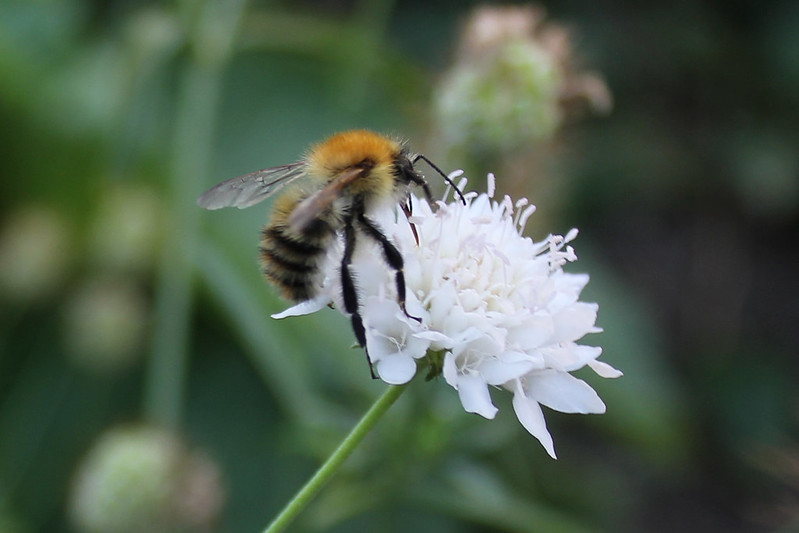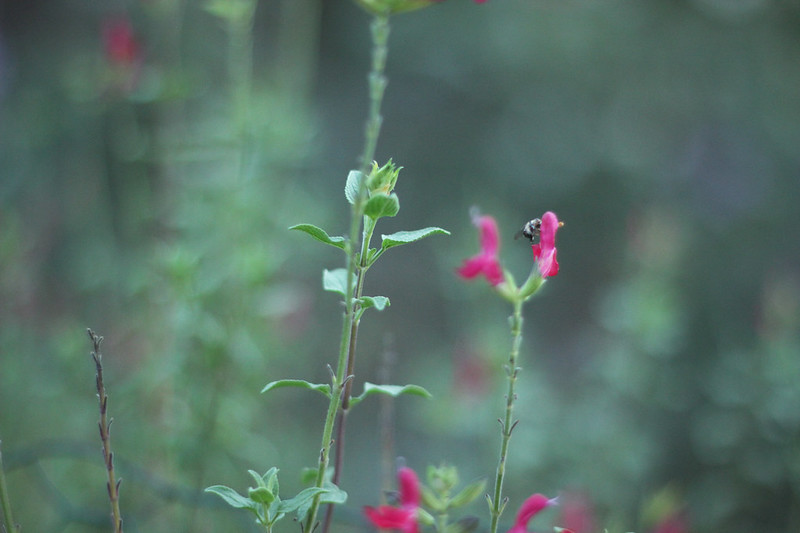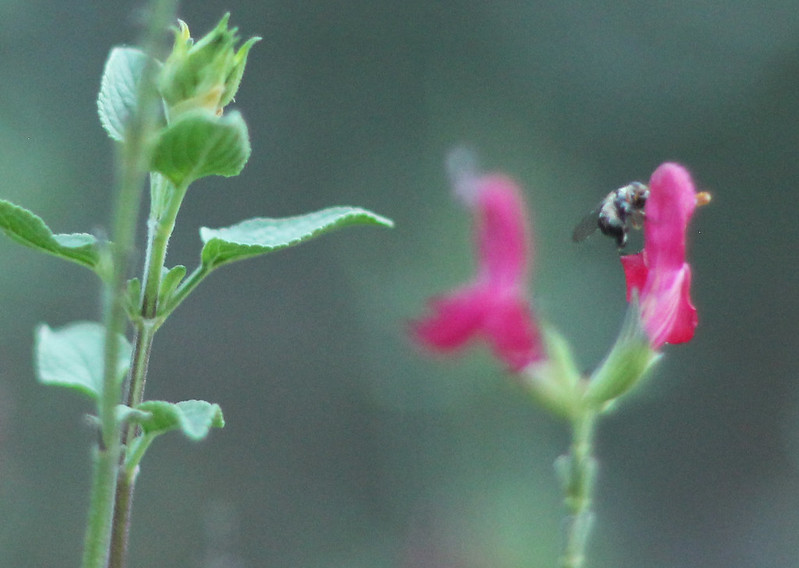As the garden transitions from summer into autumn, a plan to keep the garden looking lovely for a bit longer has been much on my mind. And never more so than the week before last as my entry for Camden in Bloom was shortlisted and judgement day was on the Friday.
It was a singularly underwhelming event. The big clue is in the title: "In Bloom". The veg patch garden, at this stage, was not - unless you count a struggling scabious, some scraggy calendula and a few end-of-line sweet peas. After an exhausting week of tidying, deadheading, weeding and planting in the twilight hours between work and nightfall, Friday's dawn revealed grey skies and, as if scripted, heavy rain poured down only and exactly for the twenty minutes that the judges looked around.
There were two of them (one admin, one Mayor), the third wasn't able to attend; pity - he was the gardener, Kew trained, and the only one who might have understood the hard work that went into creating a garden way past its mid-summer heyday. On the plus side, the mayor appreciated the smell of herbs such as Blackcurrant sage and lavender, lingering awhile to release the scent. He'd obviously been told that plants that attracted bees were good plants; once I realised this and the sparse horticultural experience the pair brought to the event, I thought it wise to limit myself to pointing out any bee friendly plants without naming them. I'm not holding my breath for a winner's medal. The verdict will be announced in late September.

So, moving on, I'm now thinking about how to extend colour in the garden next year. The perennial patch was originally created as an area for cut flowers before I realised how many perennials or self-seeders I had to rehouse. Back in the spring, the space quickly filled with transplanted foxgloves, verbenas, Centaurea, scabious, alliums, achillea, astrantias, poppies, feverfew and ox-eye daisies; to these I added freesia bulbs, cerinthe seedlings, honesty, red clover, Geums and Dianthus barbutus (the tall pinks). On the other side of the path, self seeded nasturtiums put out triffid-like branches that entwined themselves up, around and through sweet peas, calendula, strawberries, verbena, orache. It was a glorious sight ... in June and July.

Admittedly the short sharp bursts of extreme heat experienced in recent weeks haven't helped a garden without easy access to water. Astrantias and the shorter hybrid Achilleas succumbed to parched conditions and now resemble dried flowers, the cerinthe also crisped up and set seed, as did the calendulas. Even nasturtiums that usually politely wait until late summer to start taking over the garden have exhausted themselves and been swamped by black aphids (and now removed).
But ... Always look on the bright side of life says Monty Python star Eric Idle. I paused, thought and concluded that, yes, this is the perfect time to review and rethink. There were elements of this border that I really disliked, too much green of a similar hue, not enough textural interest. The reality didn't live up to the dream. The challenge now is to change the garden so there's something to look forward to throughout the seasons - isn't that what we all strive for? It won't be easy in this small space (the entire veg patch island is only 10 x 3 metres (about 33 x 10 feet) with the perennial border just one quarter of that. Thinking cap on.
So, how's your garden this autumn?
Any regrets, mistakes or ideas for change next year?
I'm thinking more Stipa grasses and echinacea here - and I'd love a bank of Heleniums if only the slugs didn't get there first, every. damn. time.






